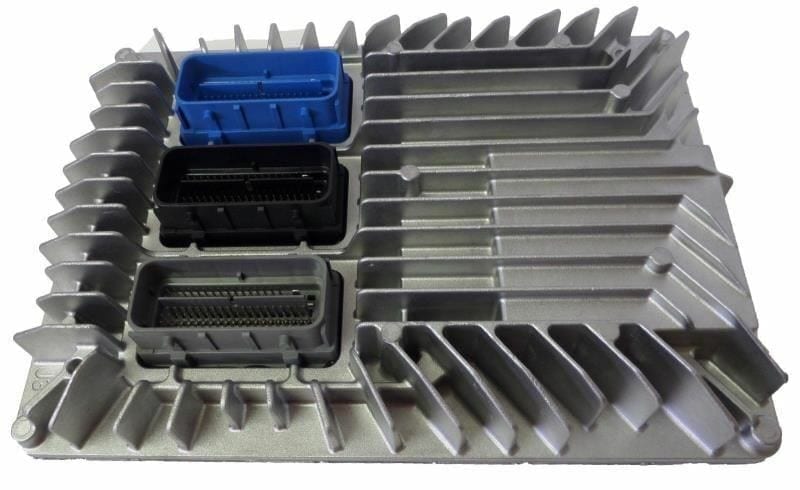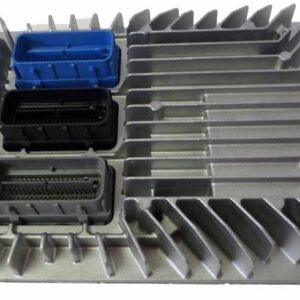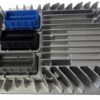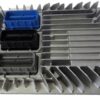Restore Peak Performance and Reliability to Your Vehicle
Is a persistent Check Engine Light driving you crazy? Are you dealing with frustrating issues like stalling, poor fuel mileage, or a no-start condition? As a technician with over 20 years on the shop floor, I’ve seen firsthand how a failing Engine Control Module (ECM) can create a cascade of problems that are often misdiagnosed. The ECM is the brain of your engine, and when it starts to fail, the symptoms can be unpredictable and confusing. This isn’t just an inconvenience; it affects your vehicle’s safety, fuel economy, and overall performance.
This isn’t just a replacement part; it’s a complete, ready-to-install solution. We take the guesswork and extra cost out of the equation by programming this module specifically to your vehicle’s VIN before it ships. This means it arrives loaded with the latest GM factory software updates, ensuring optimal communication between all your vehicle’s systems. You get a reliable fix that restores factory performance without the need for an expensive trip to the dealership for programming.
A Technician’s Notebook: The Phantom Misfire
I remember a 2012 Camaro 3.6L that came into the bay with a random misfire on cylinder 3 (P0303). The owner had already replaced the spark plug, ignition coil, and fuel injector, but the problem persisted. On a whim, I swapped the coil to another cylinder, but the misfire stayed on #3. All wiring checked out. After hours of diagnostics, we hooked up a lab scope to the ECM’s driver circuit for that coil. The signal was weak and erratic. The ECM’s internal driver was failing under load, something a simple code reader can’t see. We installed a VIN-programmed ECM just like this one, and the car ran perfectly. It’s a classic example of how a faulty module can mimic a mechanical failure, costing people time and money on unneeded parts.
Is Your Vehicle Showing These Signs of ECM Failure?
A faulty ECM can manifest in many ways. If you’re experiencing any of the following, a failing engine computer could be the culprit. Look out for:
- ✔ An illuminated Check Engine Light (CEL) with communication or internal processor codes like P0601, P0606, or U0100.
- ✔ Unexplained drops in fuel economy.
- ✔ The engine cranks but refuses to start.
- ✔ Stalling, hesitation, or rough idling for no apparent reason.
- ✔ Automatic transmission shifting erratically or harshly.
- ✔ Failure to pass an emissions inspection.
- ✔ Loss of spark or fuel injector pulse.
A Straightforward Guide to Installation
Replacing your 2012 Camaro Engine Control Module is a manageable job for a confident DIYer. Following these steps will ensure a smooth process. Always consult a vehicle-specific repair manual if you are unsure.
- Safety First: Disconnect the negative terminal from your vehicle’s battery and secure it away from the post to prevent accidental reconnection.
- Locate the ECM: On most compatible vehicles like the 2012 Camaro, the ECM is located in the engine compartment. For example, on the Camaro, it’s on the driver’s side; on a CTS, it’s on the passenger’s side. Check the fitment list for your specific location.
- Disconnect the Connectors: Carefully release the locking tabs on the electrical harness connectors and pull them straight out from the module. Never force them. Inspect the pins for any corrosion or damage.
- Remove the Old Module: Unbolt the old ECM from its mounting bracket. There are typically a few bolts or nuts holding it in place.
- Install the New Module: Mount your new, pre-programmed ECM onto the bracket and secure it. Reconnect the electrical connectors, ensuring they click firmly into place.
- Reconnect the Battery: Reattach the negative battery terminal.
- Perform Security Relearn (If Necessary): While this module is pre-programmed, some GM vehicles require a simple security relearn procedure (often called a ‘key cycle’) to sync with the anti-theft system. This can typically be done without special tools and involves turning the key to the ‘ON’ position for 10-15 minutes. Check your owner’s manual for the specific procedure for your vehicle.
Verified Vehicle Compatibility
This module is a direct replacement for part numbers 12616889, 12630908, 12637106, 12642665, 12650256, and 12651993. It is guaranteed to fit the following makes and models:
- Buick Allure: 2010 (2.4L, 3.0L)
- Buick LaCrosse: 2010-2011 (2.4L, 3.0L)
- Buick Regal: 2011
- Cadillac CTS: 2010-2012 (3.0L, 3.6L)
- Cadillac SRX: 2010-2011 (3.0L)
- Chevrolet Camaro: 2012 (3.6L)
- Chevrolet Captiva Sport: 2012
- Chevrolet Equinox: 2010-2011
- Chevrolet Impala: 2012
- Chevrolet Orlando: 2012-2013
- GMC Terrain: 2010-2011
- Saab 9-5: 2010-2011 (2.0L)
Frequently Asked Questions
What is VIN programming and why do I need it?
VIN programming is the process of loading your car’s specific Vehicle Identification Number (VIN) and factory software into the ECM. This ensures the module works correctly with your engine, transmission, and security system. We do this for you so it’s ready to install out of the box, saving you a dealership visit.
Do I need to do anything after installing this 2012 Camaro Engine Control Module?
In most cases, the module is ready to go. However, some GM vehicles may require a simple security relearn procedure, which involves a series of key cycles. This procedure does not require special tools and instructions can often be found in your owner’s manual.
Is this a used part?
This is a high-quality, inspected, and tested recycled OEM part. Each unit is verified to be fully functional before being programmed with the latest GM software for your specific vehicle, ensuring reliability and performance.
How do I provide my VIN?
After you complete your purchase, you will need to send us your 17-digit VIN. You can typically add it as a note during checkout or send it to us in a message referencing your order number. We cannot program and ship the module without it.
Will this fix my car’s problem for sure?
This module will correct any issues directly caused by a faulty ECM. While it solves a wide range of common problems, we always recommend proper diagnostics to confirm the ECM is the point of failure before ordering, as other issues can cause similar symptoms.



